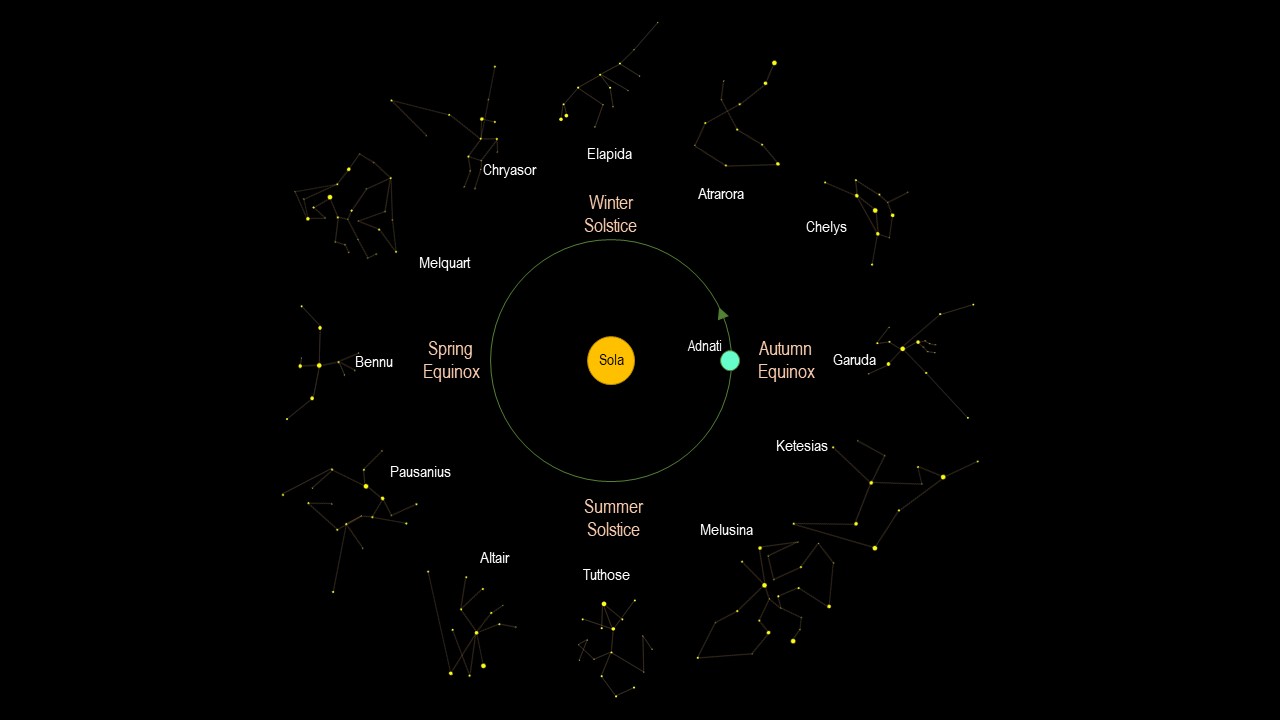There are thousands and thousands of stars in the skies above Adnati, perhaps millions of them. Of these, there are scores of named constellations, twelve of which are well-known even to non-astronomers due to how they’re used to mark the months of the calendar year and the seasons and the harvest cycles.
Ilimorí, the North Star
The most prominent star in the heavens, due both to its brightness and its closeness to the celestial north pole, is named Ilimorí after Ilimoran Toruvial, the most senior of the elven gods who, among other traits, is the God of Starlight. Navigators have used Ilimorí for millennia to guide their travels.
Most Prominent Constellations
The twelve most prominent constellations in the heavens are used to mark the months of the Common Calendar. They are named after the gods of the Almagest Pantheon. These include:
- Elapida, the Basilisk – Appearance marks the beginning of winter and the represents the first month of the year.
- Chryasor, the Pegasus – Appears during the second month of winter.
- Melquart, the Hippocampus – Appears during the third month of winter.
- Bennu, the Phoenix – Appearance marks the first month of spring.
- Pausanius, the Manticore – Appears during the second month of spring.
- Altair, the Griffin – Appears during the third month of spring.
- Tuthose, the Kraken – Appearance marks the first month of summer.
- Melusina, the Dragon – Appears during the second month of summer.
- Ketesias, the Unicorn – Appears during the third month of summer.
- Garuda, the Peryton – Appearance marks the first month of autumn.
- Chelys, the Aspidochelone – Appears during the second month of autumn.
- Atrarora, the Salamander – Appears during the third month of autumn, which is the final month of the Common Calendar.

